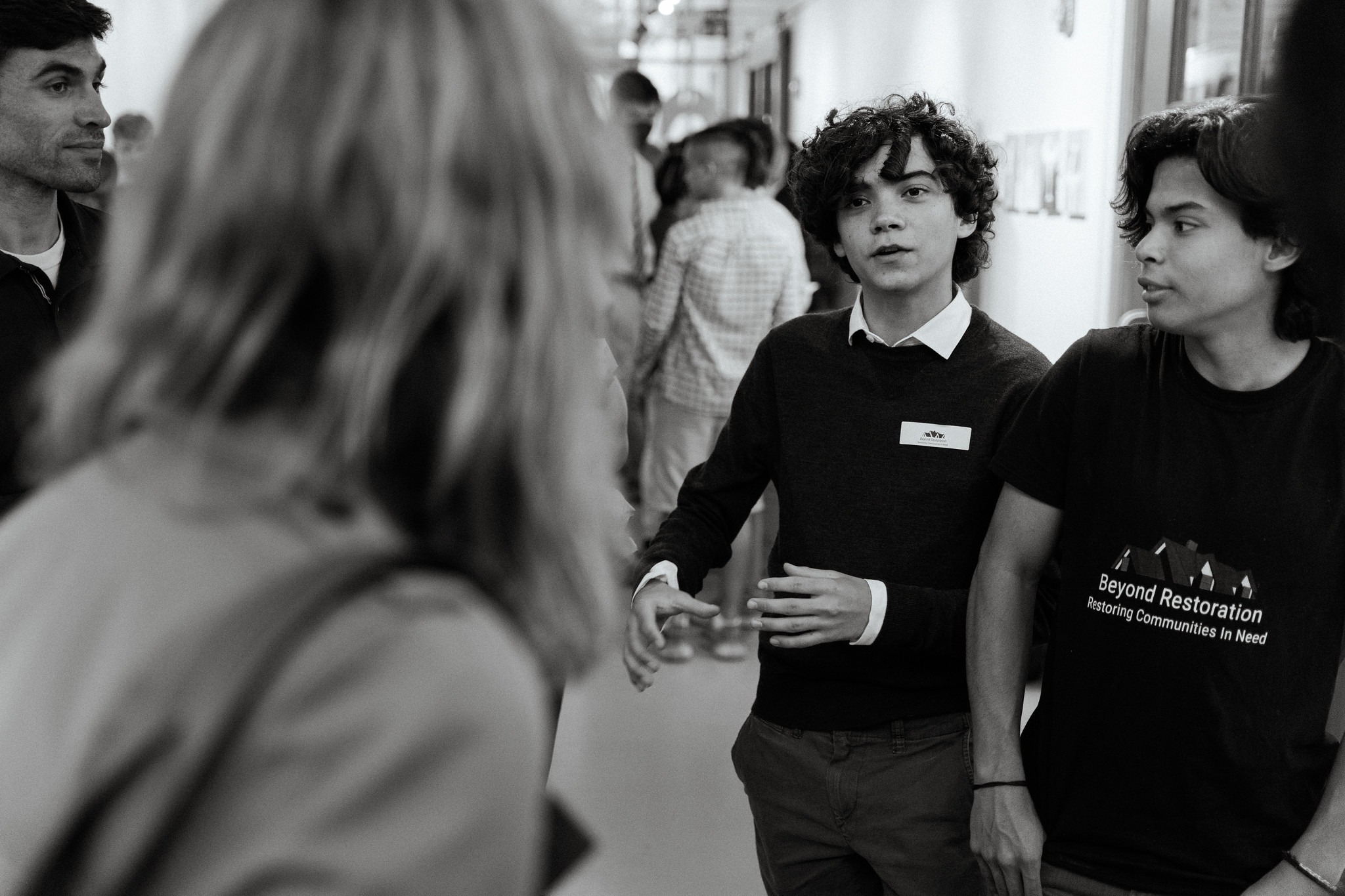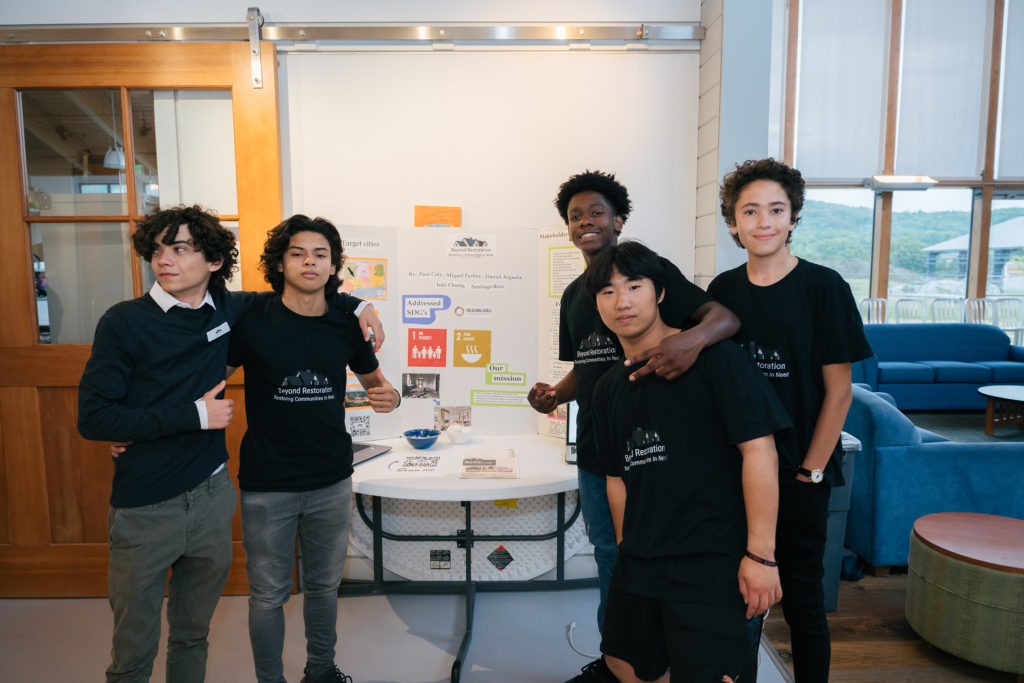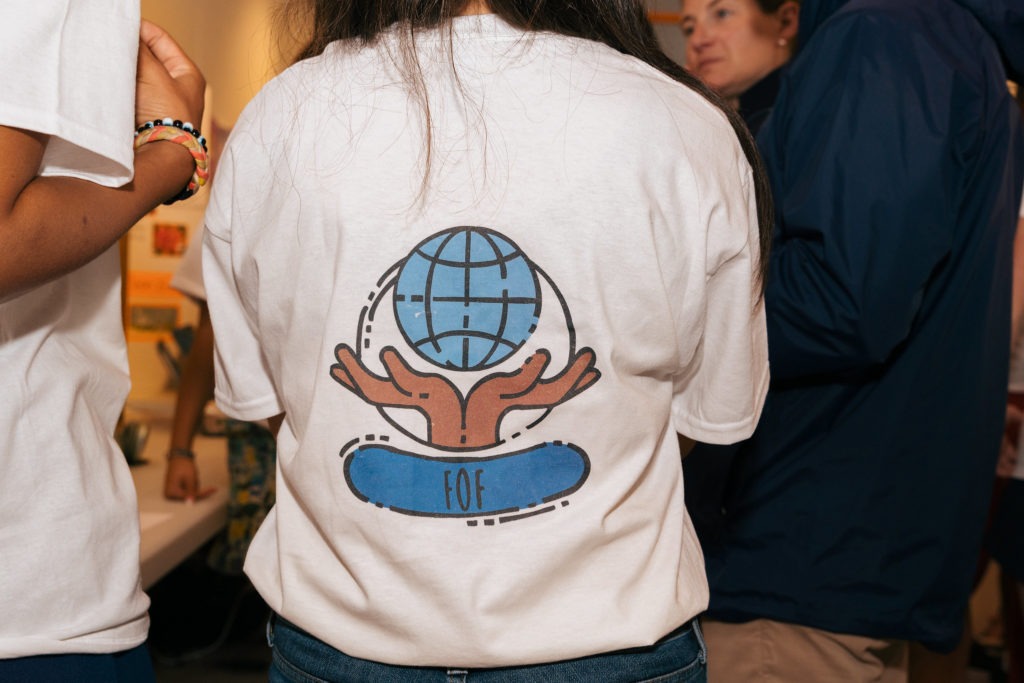Forward Thinking at the 6th Annual Poquonook Solutions Symposium

Posted on June 2, 2022 by Indian Mountain School

Superheroes who save the ocean from poachers, their adventures depicted in a comic book series to educate and inspire youth. Bricks made out of plastic waste, used to build affordable housing. Solar-powered underwater drones capable of safely removing 83-thousand tons of micro-plastics from the Indus River and the Indian Ocean. Reclaiming and remodeling abandoned buildings in Connecticut to help revive undervalued communities. A podcast as a safe conversation space and information resource for victims of domestic violence. Solar energy infrastructure to boost agriculture and the economy in Nigeria. These are a few of this year’s 9th grade projects presented at the 6th annual Poquonook Solutions Symposium.
A significant portion of the 9th grade curriculum is devoted to understanding the United Nations Sustainable Development Goals, or SDGs, which are specific targets to achieving worldwide sustainability, such as zero hunger, an end to poverty, reduced inequality and climate action. Our 9th graders form teams, choose one or more of the 17 SDGs and then design a solution to a real-world problem related to those goals. This work is all-encompassing: students are tasked not only to define the problem and provide a viable solution, they must also include detailed plans for funding and sponsorship, design prototypes, and have clear implementation strategies. A study and project like this is the very definition of teaching for relevance and purpose at IMS.
This year’s Poquonook Solutions Symposium began with presentations and a Q&A session with a panel of outside environmental experts. This year’s experts were: Sustainability consultant and strategist Elizabeth Rich, ‘09; Author and mindbodygreen Sustainability Editor Emma Loewe; Josh Hahn, Assistant Head of School and Director of Strategic Initiatives at The Hotchkiss School, and Mark Steinbuck, Director of Environmental Partners for 1% For The Planet.
After the Q&A, the teams displayed their impressive work to students, faculty and families at a gallery walk inside the Student Center.
This year-long study is an extraordinary journey for our 9th graders, not only empowering them with the tools to identify global problems and inequities, but also giving them the agency and will to act on them.


This website uses cookies so that we can provide you with the best user experience possible. Cookie information is stored in your browser and performs functions such as recognising you when you return to our website and helping our team to understand which sections of the website you find most interesting and useful.
Read our full privacy policy for more information.
Strictly Necessary Cookie should be enabled at all times so that we can save your preferences for cookie settings.
If you disable this cookie, we will not be able to save your preferences. This means that every time you visit this website you will need to enable or disable cookies again.
This website uses Google Analytics to collect anonymous information such as the number of visitors to the site, and the most popular pages.
Keeping this cookie enabled helps us to improve our website.
Please enable Strictly Necessary Cookies first so that we can save your preferences!